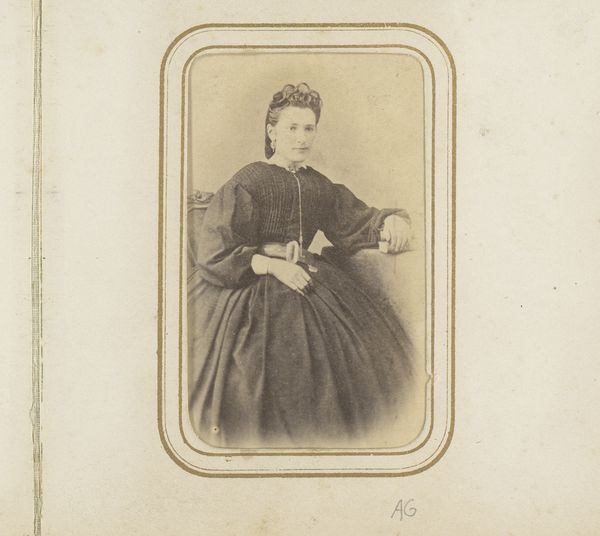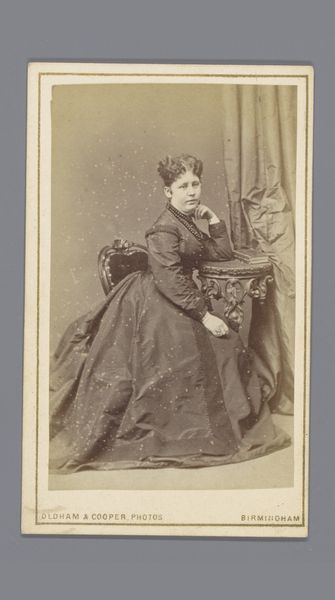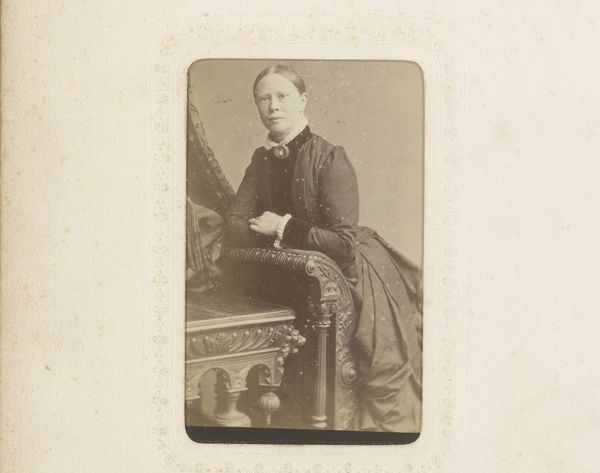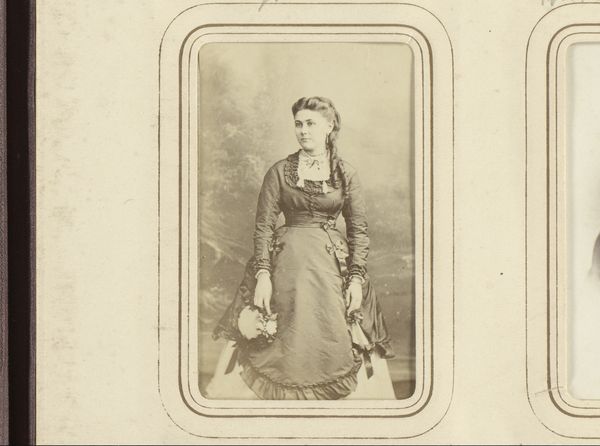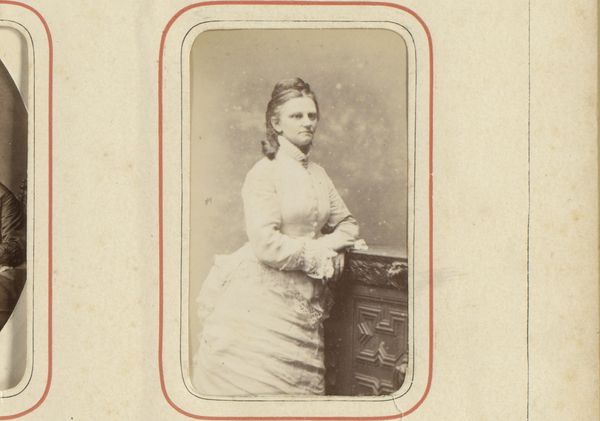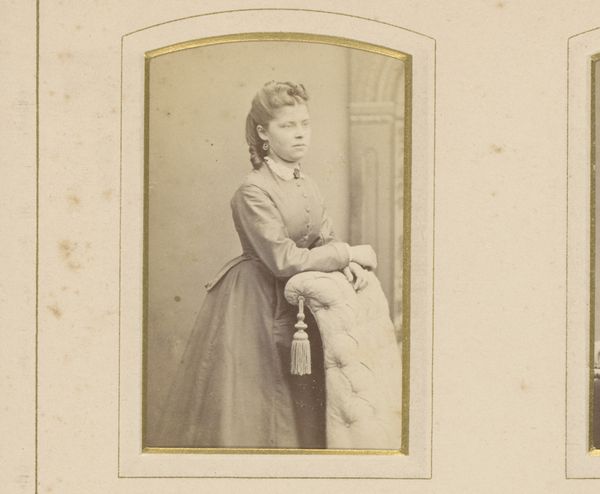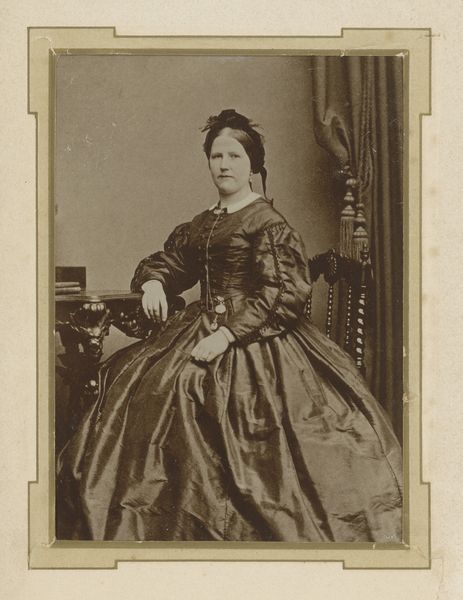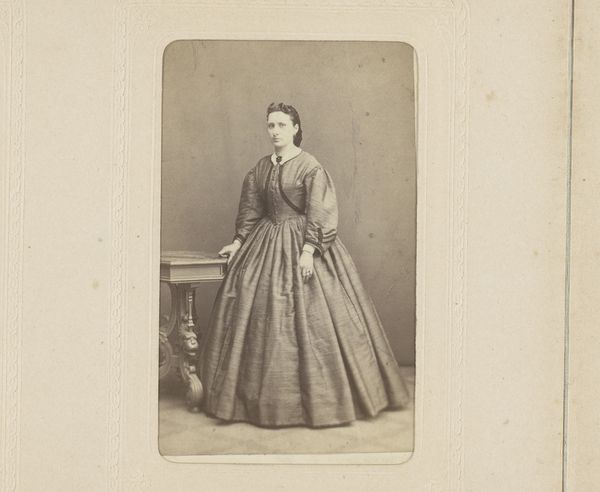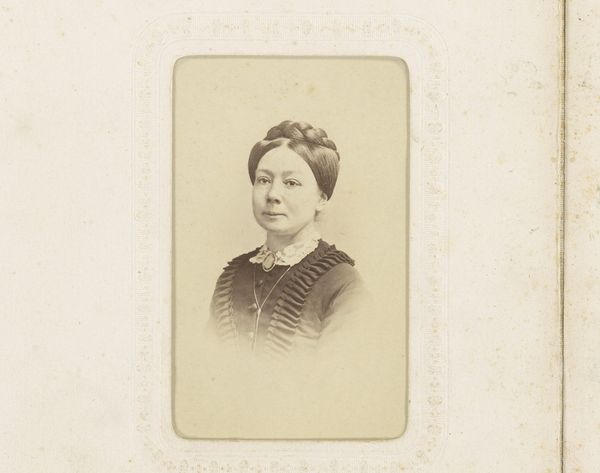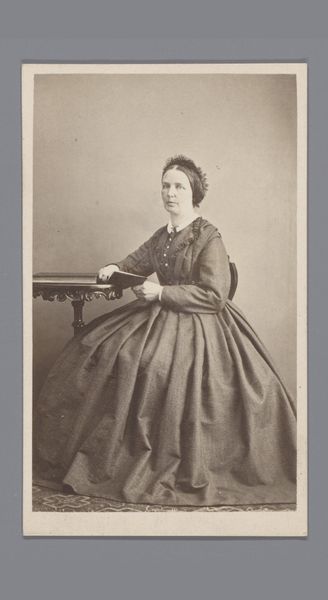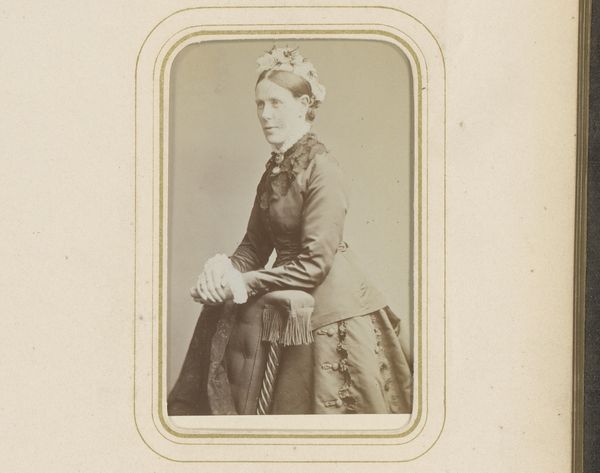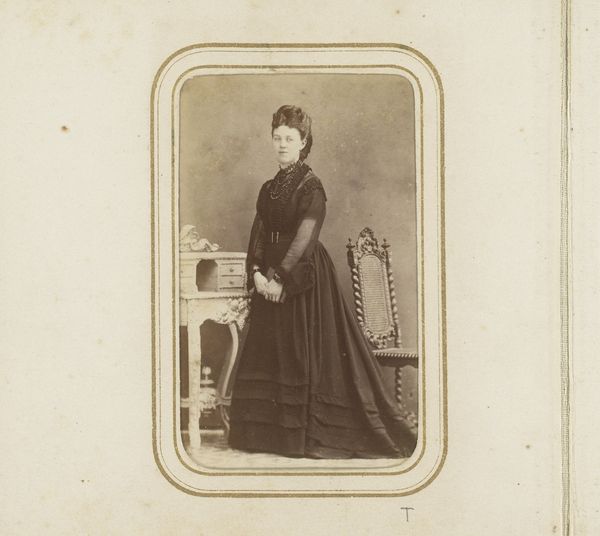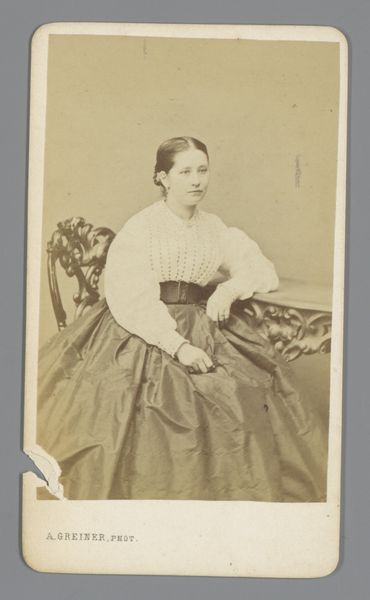
#
photo of handprinted image
#
aged paper
#
toned paper
#
vintage
#
photo restoration
#
book
#
archive photography
#
historical photography
#
old-timey
#
yellow element
#
19th century
Dimensions: height 87 mm, width 53 mm
Copyright: Rijks Museum: Open Domain
Curator: This is Moriz Ludwig Winter's "Portret van een zittende vrouw met boek in de hand," taken in 1864. Editor: It has an immediate antique charm, doesn't it? The sepia tones and the woman's period dress evoke a strong sense of a bygone era. Curator: Absolutely. This type of photographic portraiture gained popularity as a way for the rising middle class to participate in image production and visual culture. These cartes-de-visite were relatively affordable, opening up new avenues for self-representation. Editor: And the materiality of that presentation matters. You see the elaborate texture in the trimming around the image itself, then you have this woman in, what looks like, an intricately patterned dress – talk about conspicuous textile consumption! Curator: Precisely. The patterns, fabrics, and details in clothing became powerful tools to negotiate identity and social status. The book also, as a physical object, signifies literacy and education, elements this woman clearly wished to broadcast in her portrait. The sitter controls her own image in that time's popular format. Editor: And, what books were even *available* at this time, to people like her? How were books marketed and consumed? This photo invites that line of inquiry... Were photography studios also functioning as informal community hubs, offering these services to customers and advertising aspirational values through portraiture? Curator: Very good point, because these studios were becoming integrated within community life. Examining who commissioned these portraits, the access to it, and their circulation gives us valuable insight to the era’s social dynamics and the role photography played. Editor: This particular portrait even seems staged with a thought toward lasting preservation given the photo restoration and toned paper quality! It certainly speaks volumes about social performances and material investment. Curator: Indeed. It highlights how artistic practices become embedded in power structures and broader cultural narratives. Editor: This has made me think differently about portraiture as both an individual expression, and also as the culmination of socio-economic forces working behind the lens! Curator: For me, it is exciting to consider how images function both as records of individuals but also embodiments of material desires and processes of display and circulation in society.
Comments
No comments
Be the first to comment and join the conversation on the ultimate creative platform.
